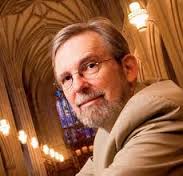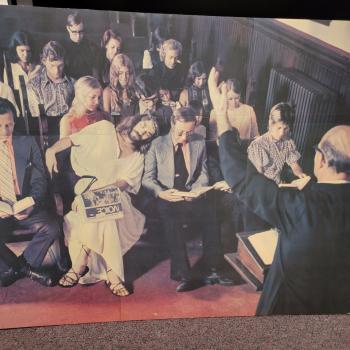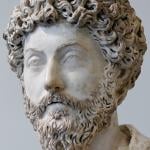The first proper chapter of this little gem of a book is a lecture on the hermeneutics of figural interpretation, and we shall spend this post on that chapter. Drawing on the famous words of Martin Luther about how the OT is the swaddling clothes manger in which the Christ is lain. So Hays argues that Luther is reading the NT figurally in order to proclaim the legitimacy of a figural reading of the OT (p. 2). Hays then adds that if the Christ is wrapped in OT attire, he is both contained and in part concealed therein. So figural reading or reading backwards is an attempt to unwind the swaddling clothes and to disclose the Christ therein. He is happy to also call this sort of reading of the OT a metaphorical (but not typological) reading of the OT.
Quoting Eric Auberbach’s definition of figural interpretation he says that it establishes a connection between two events or persons, such that the first one signifies both itself and the second one and the second one involves the fulfillment of the first. The two persons or events are separated by time, but they are both temporal in nature involving real persons or events. This definition allows a distinction between prediction, and prefiguration, with the latter not assuming that the OT writers were conscious of predicting or anticipating Christ. (p. 2). In other words, this perspective focuses on how the OT text was received, not what was in the mind of the producer. The correspondence between the two things or persons can only be seen after the second one happens and both events receive deeper significance from the other. It is Frei, whom Hays quotes who says that this hermeneutical strategy can create a deep theological coherence and set forth a unity of the whole canonical witness. In short, it is a specifically Christian way of reading the OT which presupposes the validity of the witness and interpretation of the NT writers. It is precisely these sorts of reading of the OT that many cultured despisers of Christianity have called distortions, co-opting readings, and the twisting of the OT text to say things it does not in itself say. The writers of the NT of course would entirely disagree. In their view the OT is hardly silent about Christ, and furthermore it is the death and resurrection of Jesus which provides the key to the reading of the OT, without which one cannot properly read it for all its worth.
On p. 4 Richard urges that we must learn to read the OT with the Evangelists eyes. He argues as well that Biblical theology is not only possible but encouraged when you do so. Richard is also prepared to entertain the idea that the historical Jesus himself set in motion a Christological way of reading the OT, including for example his use of Jeremiah to explain his action in the temple.
On pp. 10-12 Richard does a comparison and contrast between the Mk. 12 version of the parable of the wicked tenants and that found in the Gospel of Thomas. He concludes that the latter is later, and that it denudes and deJudaizes the story, thereby distorting the meaning. But there is more.
Richard (pp.14-15) wants to argue that a story like Emmaus Road in Lk. 24 not only teaches us to read the OT in light of Christ, but it teaches us as well that “we come to understand Scripture only as we participate in the shared life of the community, enacted in meals shared at table.” (p. 15).
P. 15 also involves the disclaimer that figural reading of the OT is meant to supplant the historical critical interpretation of the OT. Rather the literal historical meaning of the text becomes the vehicle for the latent figural meaning unsuspected by the original author and his audience. It also leads to the conclusion that the story of Israel finds its conclusion in the story of Jesus and his followers. Those who fail to go beyond the historical critical reading of the OT are those who have not yet fully understood the meaning and significance of the OT.













